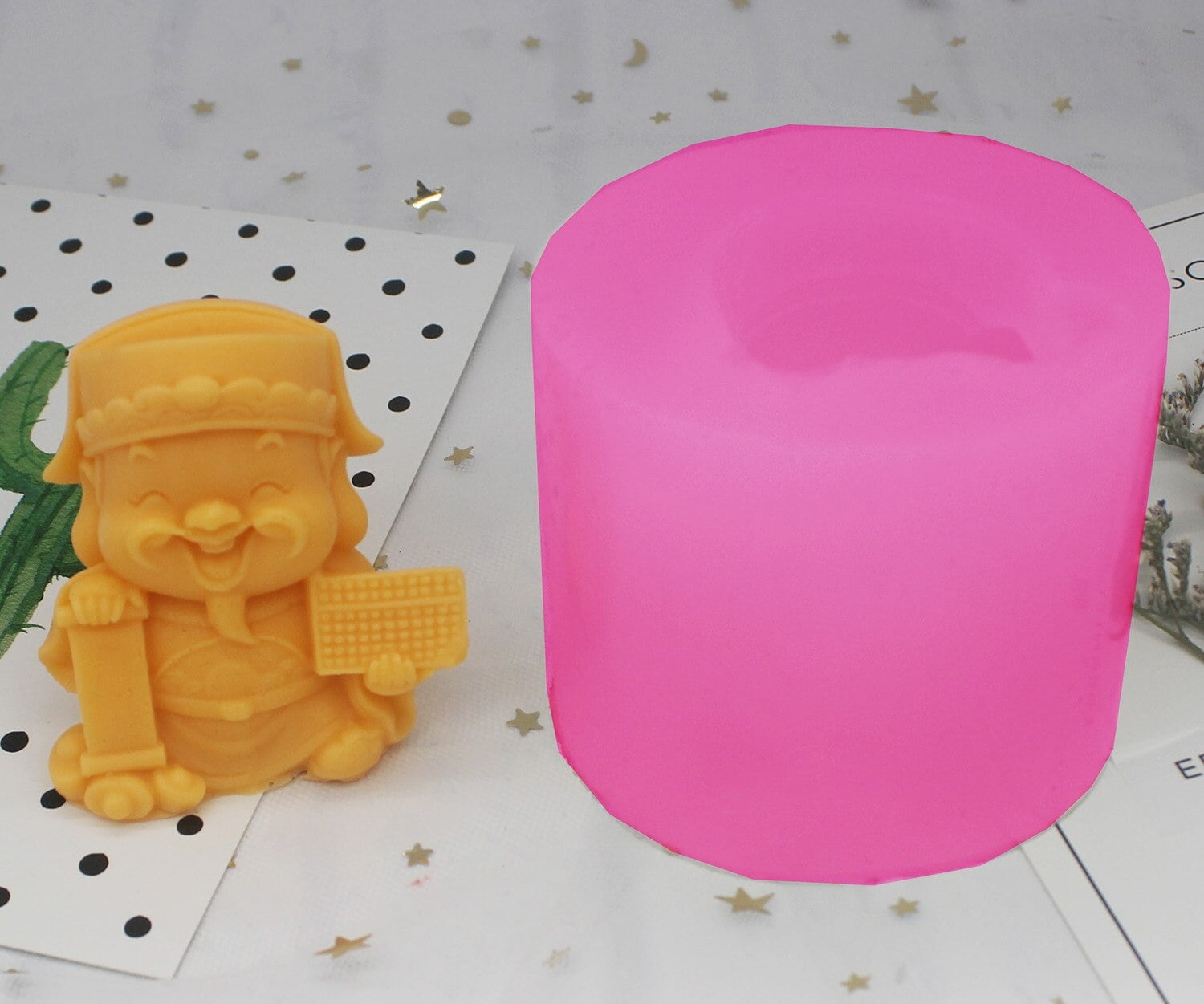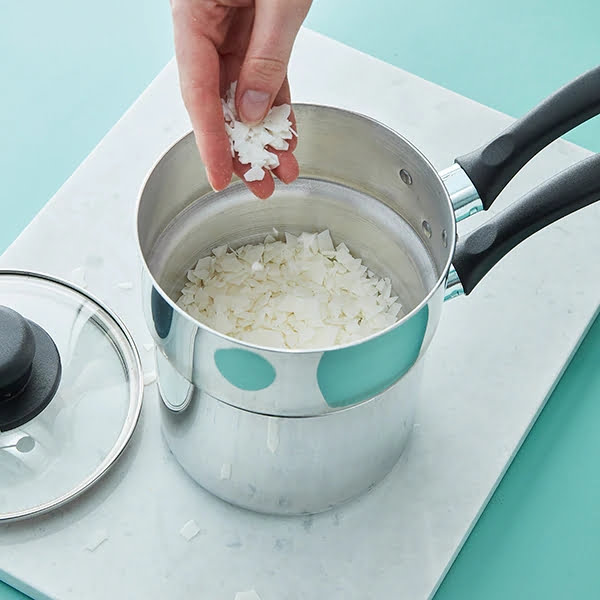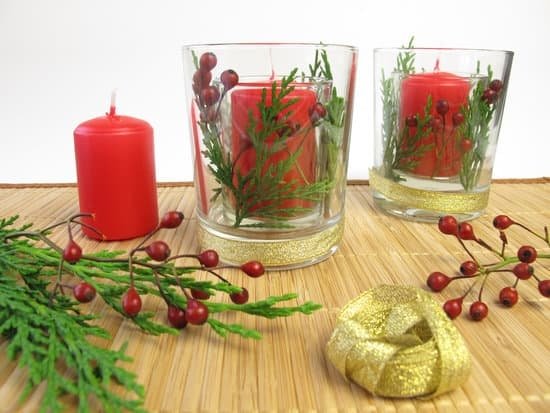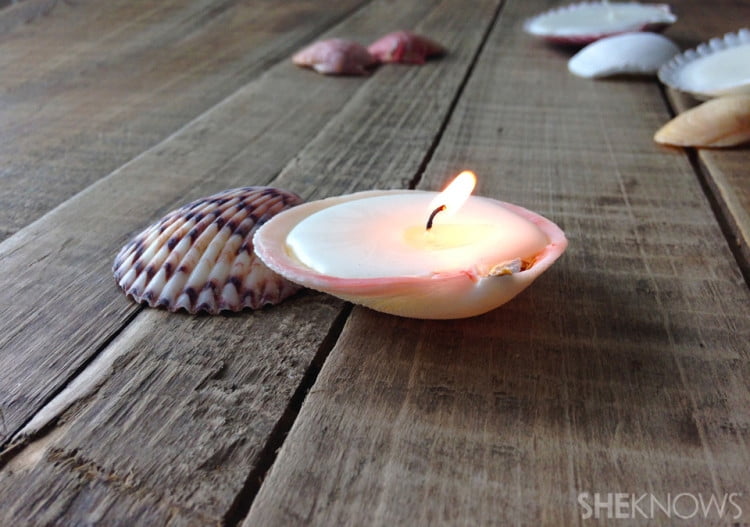Candle making is an art that goes beyond simply melting wax and adding a wick. It requires careful consideration of various factors, one of which is choosing the best fragrance oil for optimal candle scent.
The right fragrance oil can completely transform a candle and create an enchanting sensory experience. In this article, we will delve into the world of fragrance oils for candle making, exploring what they are, why they are essential, and how to choose the best ones for your creations.
Fragrance oils are concentrated aromatic compounds specially formulated for use in candles. These oils are composed of a blend of natural and/or synthetic ingredients that are capable of dispersing their scent when combined with melted wax. Unlike essential oils, which can be volatile and evaporate quickly when exposed to heat, fragrance oils provide a long-lasting scent that permeates throughout the entire burning process.
The importance of fragrance oils in candle making cannot be overstated. They not only enhance the aesthetic appeal of candles but also play a crucial role in setting the desired atmosphere or mood.
A well-chosen fragrance oil can transport you to a garden filled with blooming flowers or evoke memories of warm cozy evenings by the fireplace. Each fragrance oil has its own unique characteristics and abilities to enhance a wax’s scent throw-the distance at which you can detect the candle’s aroma-and longevity.
Now that we understand the significance of fragrance oils in candle making, let us explore the factors to consider when choosing the best ones for your creations. The right fragrance oil should align with your candle’s purpose and create an ambiance that complements its intended use.
Strength, compatibility with different types of wax, and interaction with other additives like colorants or botanicals are all crucial elements to consider when selecting a fragrance oil. By carefully considering these factors, you can unlock endless possibilities and create candles that captivate the senses and bring joy to those who experience them.
What Are Fragrance Oils and Why are They Essential for Candle Making?
Fragrance oils are an essential component of candle making, as they are responsible for providing the desired scent to the candles. These oils are specially formulated with a combination of natural and synthetic fragrance components that are designed to release a pleasant aroma when the candle is burned. Unlike essential oils, which are derived directly from plant sources, fragrance oils can be created to mimic a wide range of scents, allowing for endless possibilities in candle fragrances.
The composition of fragrance oils typically includes a mix of aromatic compounds, solvents, and stabilizers. These compounds work together to create a balanced and long-lasting scent profile when incorporated into candles. One advantage of using fragrance oils is their ability to provide consistent scent throw throughout the entire burning time of the candle. This means that the aroma will remain noticeable even as the candle melts down.
Another important reason why fragrance oils are essential for candle making is their compatibility with different types of waxes. Whether you’re using soy wax, beeswax, or paraffin wax, there’s a fragrance oil specifically formulated to perform well in each type of wax. Fragrance oils also have the advantage of holding their scent more effectively than natural botanicals like dried flowers or herbs, ensuring that your candles emit a strong and enjoyable fragrance.
When choosing fragrance oils for candle making, it’s crucial to consider several factors such as strength, compatibility with wax type, and potential interactions with other additives used in candle formulation. The strength refers to the intensity of the scent released by the oil during burning. Some individuals prefer subtle scents that gently fill a room, while others enjoy vibrant fragrances that immediately create an inviting atmosphere.
Compatibility with wax type is another critical consideration since different types of waxes may require specific formulas or concentrations of fragrance oil for optimal performance. For example, soy wax tends to hold onto fragrances very well whereas paraffin wax may require higher concentrations or certain types of fragrance oils to achieve the desired scent throw.
Lastly, it’s important to be mindful of any potential interactions fragrance oils may have with other additives in your candle formulation. Some fragrances may accelerate the curing time for certain waxes or cause undesirable effects when combined with dyes or UV inhibitors. Therefore, it’s recommended to conduct small test batches when using new fragrance oils or altering your candle formulation to ensure compatibility and avoid any unwanted results.
Considering these factors and understanding the importance of fragrance oils in candle making will help you choose the best options for creating candles with long-lasting, enjoyable scents that enhance any environment.
Factors to Consider When Choosing the Best Fragrance Oil for Candle Making
When it comes to candle making, choosing the right fragrance oil is crucial in creating a high-quality and desirable product. Several factors should be taken into consideration when selecting the best fragrance oil for your candles. These factors can greatly influence the overall scent, performance, and customer satisfaction of your finished candles.
One important factor to consider is the purpose and ambiance of your candles. Different fragrances evoke different emotions and create various atmospheres. For example, if you are creating candles for relaxation or aromatherapy purposes, scents like lavender or chamomile would be suitable choices.
On the other hand, if you are making candles for special occasions like weddings or parties, floral or fruity scents might be more appropriate. Understanding the desired mood and purpose of your candles will help you narrow down fragrance options that align with your goals.
Strength is another essential factor to consider. The strength of a fragrance oil determines how potent the scent will be in your finished candles. Some people prefer a subtle scent that is not overpowering, while others may desire a strong and long-lasting aroma. It’s important to choose a fragrance oil that matches your preferences and meets the expectations of your target audience.
Compatibility with wax and other additives is also an important consideration. Not all fragrance oils are compatible with every type of wax or additive used in candle making. Some fragrance oils may cause discoloration or negatively interact with certain waxes or additives, resulting in poor performance or undesirable outcomes. It is crucial to research and select fragrance oils specifically formulated for compatibility with the type of wax you are using.
| Factors to Consider | Description |
|---|---|
| Purpose and Ambiance | Consider the desired mood and purpose of your candles when choosing a fragrance |
| Strength | Determine the desired potency and longevity of the scent in your finished candles |
| Compatibility with Wax and Additives | Ensure that the fragrance oil is compatible with the type of wax and any additional additives you plan to use |
Exploring Different Fragrance Oil Categories for Candle Making
When it comes to candle making, the fragrance oil you choose plays a crucial role in the overall scent experience. With so many options available, it can be overwhelming to decide which fragrance oil is best for your candles. One helpful approach is to explore different fragrance oil categories, each offering a unique aromatic experience. Here are some popular fragrance oil categories to consider:
- Floral Scents: Floral scents are timeless classics, adding a touch of elegance and romance to any candle. From delicate roses to vibrant lavender, floral fragrance oils can create a calming and soothing ambiance in your space.
- Fruity Scents: If you’re looking for a refreshing and vibrant scent, fruity fragrance oils are an excellent choice. From juicy citrus fruits like oranges and lemons to succulent berries and tropical fruits, these scents can enliven your candles and leave behind a sweet aroma.
- Herbal Scents: Herbal fragrance oils provide a natural and earthy aroma that is perfect for creating a relaxing atmosphere. Consider fragrances such as fresh-cut herbs like sage or rosemary, or even cozy essential oils like eucalyptus or peppermint.
- Seasonal Scents: Seasonal fragrance oils are perfect for capturing the essence of specific times of the year. Whether you’re aiming for the warm spices of autumn or the fresh pine scent of winter, seasonal fragrances can transport you to your favorite season throughout the year.
Exploring these different fragrance oil categories allows you to experiment with various aromas and create candles that suit any occasion or mood. Remember that every scent will interact differently with wax types and other additives present in your candle-making process. It’s essential to consider these factors when choosing your fragrance oil to ensure compatibility and optimal performance.
To truly personalize your candle creations, don’t be afraid to mix and match fragrance oils from different categories. This can result in unique and captivating scents that are completely one-of-a-kind. The possibilities are endless, so let your creativity run wild as you explore the world of fragrance oil categories for candle making.
Top 5 Fragrance Oils Recommended for Candle Making
When it comes to creating the perfect scent for your candles, choosing the right fragrance oil is crucial. With so many options available, it can be overwhelming to find the best one for your candle making project. To simplify your decision, we have compiled a list of the top five fragrance oils recommended for candle making. Each of these oils has been carefully selected based on their unique features, scent profiles, and performance in candles.
- Vanilla: Vanilla fragrance oil is a classic choice for candle making. Its warm and comforting scent creates a cozy atmosphere that is perfect for relaxation or setting the mood during special occasions. Vanilla fragrance oil also blends well with other scents, allowing you to create custom combinations and unique aromas.
- Lavender: Known for its calming properties, lavender fragrance oil is an excellent choice for creating candles that promote relaxation and stress relief. The soothing aroma of lavender can help create a peaceful environment perfect for winding down after a long day or practicing meditation and self-care.
- Fresh Linen: If you’re looking to recreate the fresh and clean smell of freshly laundered linens in your candles, then fresh linen fragrance oil is the way to go. This scent evokes a sense of cleanliness and purity that can instantly freshen up any space. It’s an ideal choice if you want to create a welcoming atmosphere when guests walk into your home.
- Apple Cinnamon: Embrace the cozy vibes with apple cinnamon fragrance oil. This delightful blend combines the sweetness of ripe apples with the warmth of cinnamon spice, creating a deliciously fragrant aroma that will remind you of homemade apple pie baking in the oven.
- Ocean Breeze: For those who love refreshing scents reminiscent of the sea, ocean breeze fragrance oil is a fantastic option. With its notes of salty air, dewy ocean waves, and subtle floral undertones, this fragrance oil will transport you to a tranquil beachside getaway and infuse your space with a crisp, clean scent.
When using these fragrance oils in your candles, it’s important to follow the recommended usage guidelines provided by the manufacturer. The proper amount of fragrance oil will ensure a well-balanced scent that is neither overpowering nor too weak. Additionally, always conduct a small test burn before making larger batches of candles to ensure that the fragrance oil performs well with your chosen wax and wick combination.
With these top five fragrance oils for candle making, you’ll have plenty of options to choose from when creating your signature scents. Whether you prefer the warm embrace of vanilla or the invigorating freshness of ocean breeze, these oils will take your candle-making journey to new aromatic heights.
Best Fragrance Oils for Specific Candle Types and Purposes
When it comes to candle making, the type of wax used can greatly impact the scent profile and performance of a fragrance oil. Different waxes have different characteristics, so it’s important to choose a fragrance oil that is compatible with the specific candle type being made.
For soy candles, fragrance oils with a low melting point and excellent cold and hot throw are ideal. Some popular fragrance oils for soy candles include vanilla, lavender, and clean cotton. These scents not only complement the natural aroma of soy wax but also provide a soothing and relaxing ambiance.
Beeswax candles have their own unique scent that is often described as warm and sweet. Fragrance oils that enhance these qualities are perfect for beeswax candles. Some popular options include honey, cinnamon, and amber fragrances. It’s important to note that beeswax has a high melting point, so fragrance oils with higher flashpoints are recommended.
Paraffin wax is commonly used in candle making due to its affordability and good scent throw. When selecting fragrance oils for paraffin candles, look for those specifically formulated for this type of wax. Some popular choices include fruity fragrances like apple or strawberry, as well as classic scents such as vanilla or sandalwood.
When considering the purpose of the candle, such as relaxation or aromatherapy, certain fragrance oils are better suited than others. For relaxation candles, scents like lavender, chamomile, and eucalyptus are known for their calming properties. Aromatherapy candles often feature essential oil-based fragrances like bergamot or lemongrass which offer therapeutic benefits.
It’s worth noting that experimentation is key when it comes to finding the best fragrance oils for specific candle types and purposes. Everyone’s scent preferences are unique, so don’t be afraid to mix and match different fragrance oils until you find the perfect combination for your candle creations.
Tips and Tricks for Incorporating Fragrance Oils into Candle Making
Proper Measurement and Ratios
When incorporating fragrance oils into candle making, it is crucial to use proper measurements and ratios. The right amount of fragrance oil can greatly enhance the scent of your candles, while using too much can overpower the fragrance or result in performance issues. It is recommended to follow the guidelines provided by the fragrance oil manufacturer for the recommended usage rate. Typically, this is expressed as a percentage, such as 6-10% of fragrance oil per pound of wax.
Temperature Control
Another important tip when working with fragrance oils in candle making is to control the temperature during the scenting process. Fragrance oils are typically added when the wax has reached a specific temperature known as the “scenting temperature.” This temperature may vary depending on the type of wax being used, so it’s vital to refer to the instructions or recommendations from both the wax and fragrance oil manufacturers.
Additionally, it’s crucial to ensure that both the wax and fragrance oil are within a similar temperature range before blending them together. If they are at significantly different temperatures, it could cause issues such as uneven distribution or poor scent throw. To achieve optimal results, allow both components to reach approximately 180-185°F (82-85°C) before combining.
Mixing Techniques
The method used to mix fragrance oils into candles can also impact their overall scent quality. It is important to thoroughly blend the fragrance oil with the melted wax to ensure even distribution. One effective technique is pouring a small amount of melted wax into a separate container and adding the fragrance oil directly into that portion. Mix this small batch well until fully incorporated, then pour it back into the larger container of melted wax and stir again.
A gentle hand stirring motion should be used throughout this process, avoiding vigorous mixing that could introduce air bubbles into the mixture. Stir slowly but consistently for a few minutes to ensure the fragrance oil is evenly dispersed. Remember to scrape the sides and bottom of the container to prevent any fragrance oil from settling or clumping, as this may lead to an uneven scent distribution in the finished candle.
By following these tips and tricks, candle makers can effectively incorporate fragrance oils into their creations, ensuring optimal scent performance and customer satisfaction.
FAQs and Troubleshooting Common Issues with Fragrance Oils and Candle Making
As you embark on your candle making journey, you may encounter some questions and challenges when it comes to working with fragrance oils. In this section, we will address frequently asked questions and provide solutions to common issues that may arise when using fragrance oils in candle making.
- Why is the scent of my candles fading?
- How do I achieve an even distribution of scent in my candles?
- Why is my candle not throwing enough scent when lit?
One common issue that candle makers face is scent fading over time. This can be caused by several factors. One possibility is that the fragrance oil was not added at the correct temperature during the candle making process. It’s important to follow the recommended guidelines provided by the fragrance oil manufacturer for optimal scent throw.
Another factor could be the type of wax used. Different waxes have different abilities to hold onto fragrances, so make sure you are using a wax that is compatible with fragrance oils. Additionally, storing your candles in a cool, dark place can help preserve their scent for longer periods of time.
Uneven distribution of scent can be frustrating when you want your entire candle to smell as fragrant as possible. To achieve an even distribution, make sure you are thoroughly mixing the fragrance oil into the melted wax before pouring it into your containers or molds.
Using a fragrance load calculator can also help ensure you are adding the right amount of fragrance oil for your specific wax type and container size. Too much or too little fragrance oil can affect how evenly the scent is dispersed throughout the candle.
If you find that your candles are not emitting enough fragrance when lit, there are a few potential reasons for this issue. First, check if you are using enough fragrance oil for the size of your candle. Increasing or decreasing the amount of fragrance oil used may help achieve a stronger scent throw.
Additionally, consider the type of wick used in your candles. A wick that is too small may not create enough heat to release the fragrance from the wax. Experimenting with different wick sizes and types can help you find the right combination for optimal scent throw.
By addressing these frequently asked questions and troubleshooting common issues, you can enhance your candle making experience and ensure that your fragrance oils are utilized to their fullest potential. Don’t be afraid to experiment and make adjustments along the way, as finding the perfect balance will ultimately result in candles that fill your space with delightful scents.
Concluding Thoughts
In conclusion, selecting the best fragrance oil for candle making is crucial in creating candles that emit a captivating and long-lasting scent. Throughout this article, we have explored the world of fragrance oils and learned about their composition and significance in candle making. We have also discussed various factors to consider when choosing fragrance oils, such as strength, compatibility with wax, and interaction with other additives.
Furthermore, we have delved into different fragrance oil categories, including floral, fruity, herbal, and seasonal scents, each with its own characteristics and effects on candle scent. Additionally, we have provided detailed reviews of the top five fragrance oils recommended for candle making, highlighting their unique features, scent profiles, and overall performance.
Moreover, we have discussed the ideal fragrance oils for specific candle types and purposes. Whether you are crafting soy or beeswax candles or seeking relaxation or aromatherapy benefits from your candles, there is a fragrance oil tailored to your needs. We have also offered expert tips on incorporating fragrance oils into candle making successfully while addressing common issues that may arise during the process.
In closing, finding your signature scent in candle making is an exciting journey of experimentation and discovery. By exploring different fragrance oil options and experimenting with various combinations and concentrations, you can create captivating candles that reflect your personal style and create a comforting ambiance in any space. So go ahead and unleash your creativity in candle making by selecting the best fragrance oils that speak to you and allow you to make truly memorable scented creations.

Welcome to my candle making blog! In this blog, I will be sharing my tips and tricks for making candles. I will also be sharing some of my favorite recipes.





